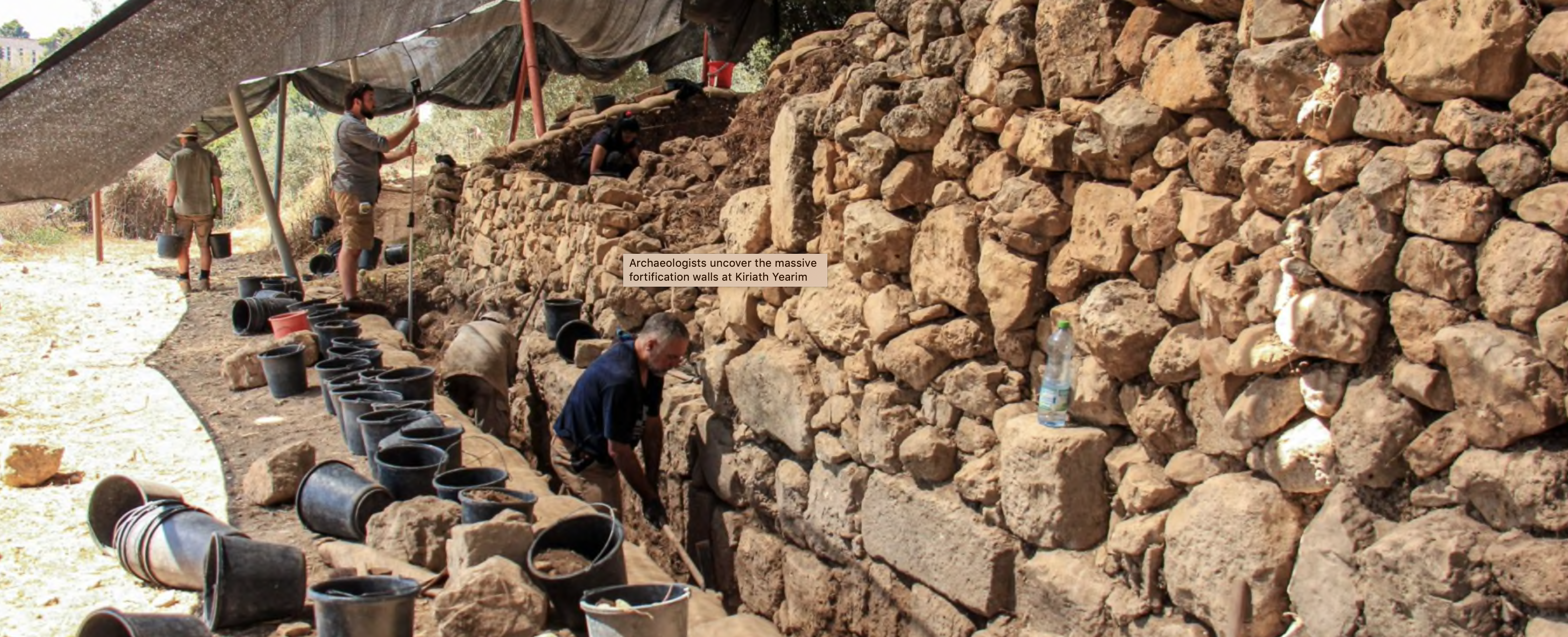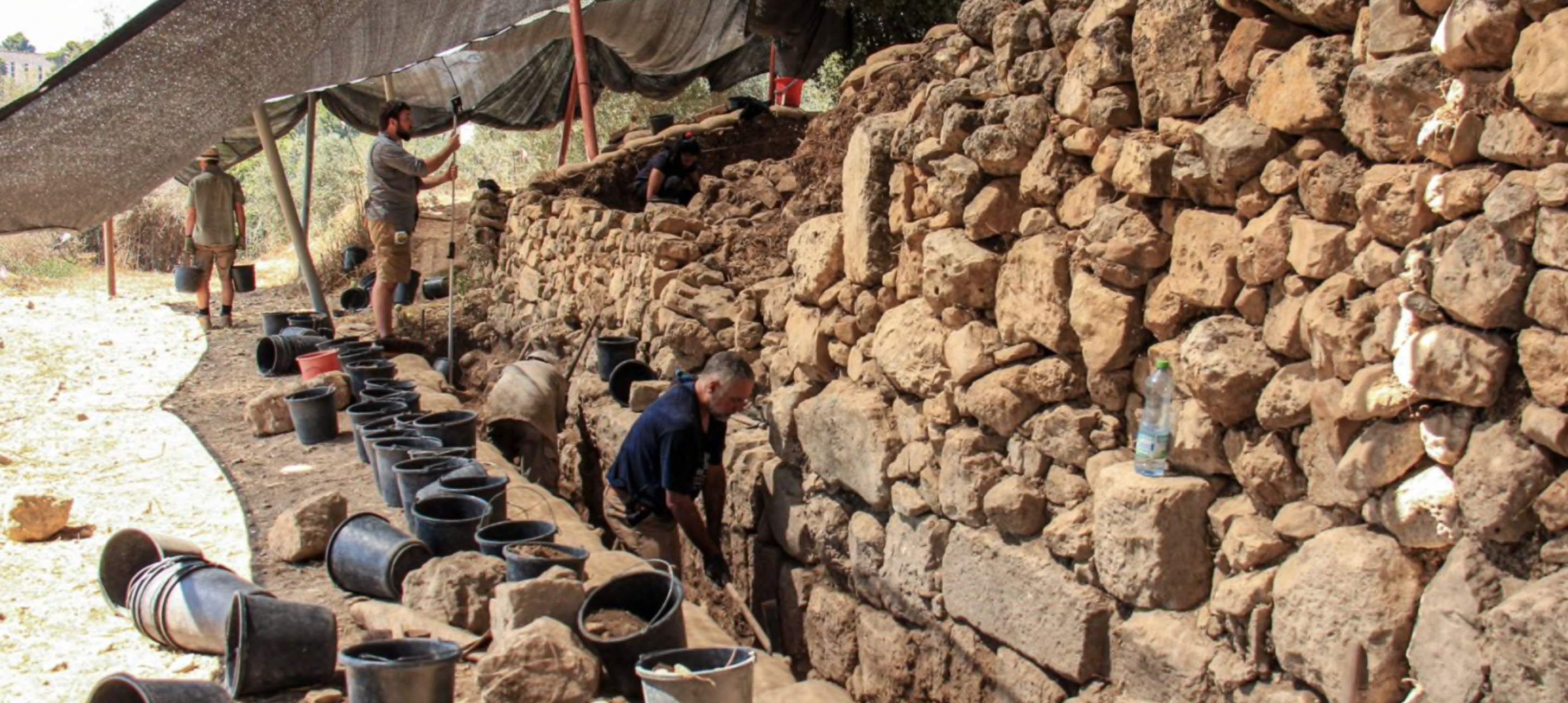
Israeli Archaeologists May Have Found Emmaus, Where Jesus Appeared After Crucifixion

Archaeologists have uncovered the massive walls of a 2,200-year-old Hellenistic fortification that may have been built by the Seleucid general who defeated Judah the Maccabee, the famed Jewish leader at the center of the Hanukkah story. In an unexpected twist, the discovery could also help identify the location of the biblical town of Emmaus, where the Gospels say Jesus made his first appearance after being crucified and resurrected.
Since 2017, a Franco-Israeli expedition has been digging at Kiriath Yearim, a hill overlooking the approach to Jerusalem a few kilometers west of the city, next door to the town of Abu Ghosh. The site is mainly known for being the spot where the Ark of the Covenant was kept for 20 years before being taken to Jerusalem by King David, according to the Bible.
Indeed, much attention at the dig has focused on finds from the biblical period, namely a large earth platform surrounded by massive containment walls, which may have housed an Israelite cultic or administration center in the 8th-7th centuries B.C.E. But over the 2019 summer’s excavation, researchers uncovered evidence of at least two later phases at the site.
One is a second set of imposing fortifications, built over or next to the original walls. These military installations can be dated to the first half of the second century B.C.E. – the late Hellenistic period. These walls were then repaired and restored during Roman times, in the first century C.E., says Tel Aviv University archaeologist Israel Finkelstein.
The dating is based on pottery and other archaeological finds, as well as a dating technique called Optically Stimulated Luminescence, which can tell researchers when certain materials were last exposed to sunlight.
“The importance of this site, its dominant position over Jerusalem, was felt again and again through time: in the eighth century B.C.E., and then again in the Hellenistic period and then again after the First Jewish Revolt and the sack of Jerusalem in 70 C.E.,” Finkelstein tells Haaretz.
Whoever controlled the narrow approaches to Jerusalem from the coast essentially controlled the city, by deciding who and what was allowed in and out. This was true in antiquity as it was during Israel’s 1948 Independence War, when the area saw heavy fighting between Jewish forces and the Arab militias that besieged Jerusalem by blockading the road.
The massive walls of the newly discovered fortifications are up to three meters thick and in some areas still stand two meters tall. During the last weeks, the team of the Shmunis Family Excavations from Tel Aviv University and the College de France has also unearthed what appear to be the remains of a tower.
itadel was restored and garrisoned by the Romans, as attested by the discovery of Roman tiles, coins from that era and nails of the type used in legionnaires’ sandals. Previously, archaeologists had found four inscriptions on the hill of Kiriath Yearim and in the adjacent village of Abu Ghosh that show that the town housed a detachment of the 10th Roman legion after the end of the First Jewish Revolt (66-73 C.E.).
But who was living in the area back in Hellenistic times? In an upcoming study, the researchers have reached a stunning conclusion that has broader implications for biblical archaeology and Christian history. Their paper will be published October 24 in the journal “New Studies in the Archaeology of Jerusalem and its Region” and presented at a conference of the same name in Jerusalem.
The death of Judah the Maccabee
During the second century B.C.E., Judea was ravaged by the conflict between the Hellenistic Seleucid Empire and the rebel Jewish forces led by Judah the Maccabee and his brothers. Most people remember Judah’s triumph over the Greeks and his reconquest of Jerusalem and the Temple in 164 B.C.E. – which is celebrated during the feast of Hanukkah.
But the full story is that the war dragged on long after that and it took many decades of conflict and politicking until the Jews regained a semblance of independence under Judah’s successors, the Hasmonean dynasty.
Judah himself was defeated and killed in 160 B.C.E. at the Battle of Elasa by a Seleucid army led by Bacchides, a general dispatched to Judea to quash the rebellion. Bacchides retook Jerusalem and, according to both the first book of the Maccabees and the Jewish Roman historian Josephus Flavius, he built a ring of fortresses guarding the approaches to the capital. Bacchides also reinforced the Akra, the Seleucid stronghold in the city whose ruins were discovered in 2015.
Bacchides’ building spree is the only known case of large-scale fortification construction in Judea during this period, explains Thomas Römer, a professor of biblical studies at the College de France who co-authored the study with Finkelstein. So could the Hellenistic walls at Kiriath Yearim be one of the forts built by Bacchides?
Josephus’ Antiquities as well as 1 Maccabees 9 give lists of the towns that the general fortified, including Bethel, Jericho, Gezer, Bet Horon and other locations. Most of these places can be identified as sites located north, south and east of Jerusalem, and at some of them archaeologists have indeed found remains of Hellenistic fortifications.
Read more: Haaretz
